Semantic Floor Plans (Graduate Thesis, 2024)
A Robust, Transparent, and Steerable AI Agent System for the Design of Floor Plans
The project is a graduate thesis and collaboration between the students Cornelius Carl, Arindam Katoch, and Samuel Losi under the supervision of Ali Nakhaee, Katja Rinderspacher, Dr.-Ing. Tobias Schwinn, Prof. AA Dipl.(Hons) Achim Menges, and Tenure-Track Prof. Thomas Wortmann. Download the full documentation .


Harnessing technologies built upon the recent developments of artificial intelligence (AI), this thesis seeks to extend the potential of digital architectural tools through the usage of a large language model (LLM) system. Application of an LLM has the potential to accommodate fundamental changes to a geometric script through application of an AI agent system while giving the user more control over its generated content by making the AI's decision-making process more transparent.

It reveals an opportunity to reduce time spent on repetitive tasks and allow users to focus more on conceptual aspects of their work. The goal of this thesis is to create a novel architectural tool that enables a designer to collaborate with generative AI by guiding its outputs rather than blindly relying on them.

By tailoring an interface frontend to an LLM-based backend, this research develops a medium of interaction between an architect-user and an AI agent system for software-based, early stage design process collaboration for the design of floor plans.

The software grants each actor the ability to play to their unique strengths: architect as decision-maker and AI as content generator.

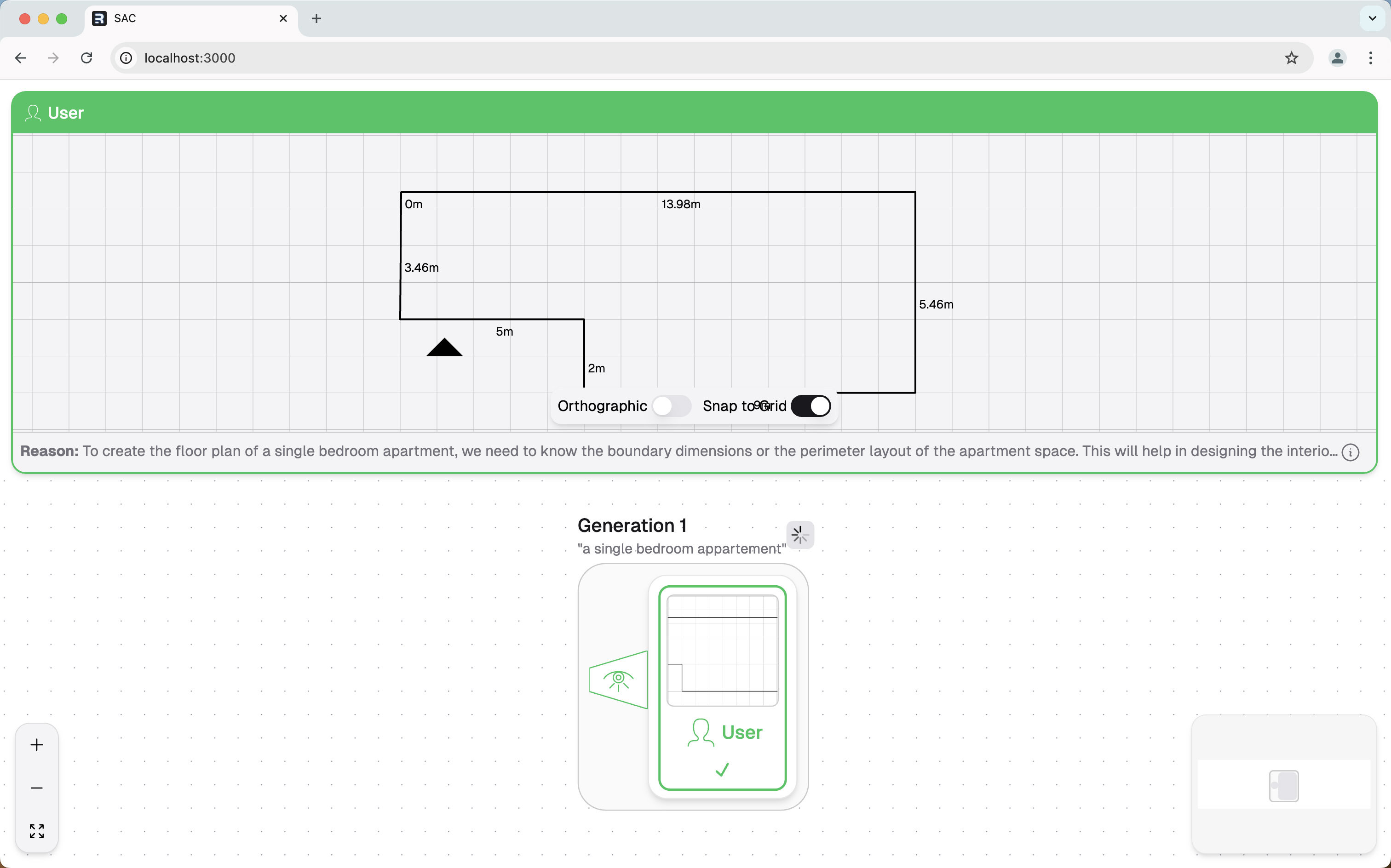
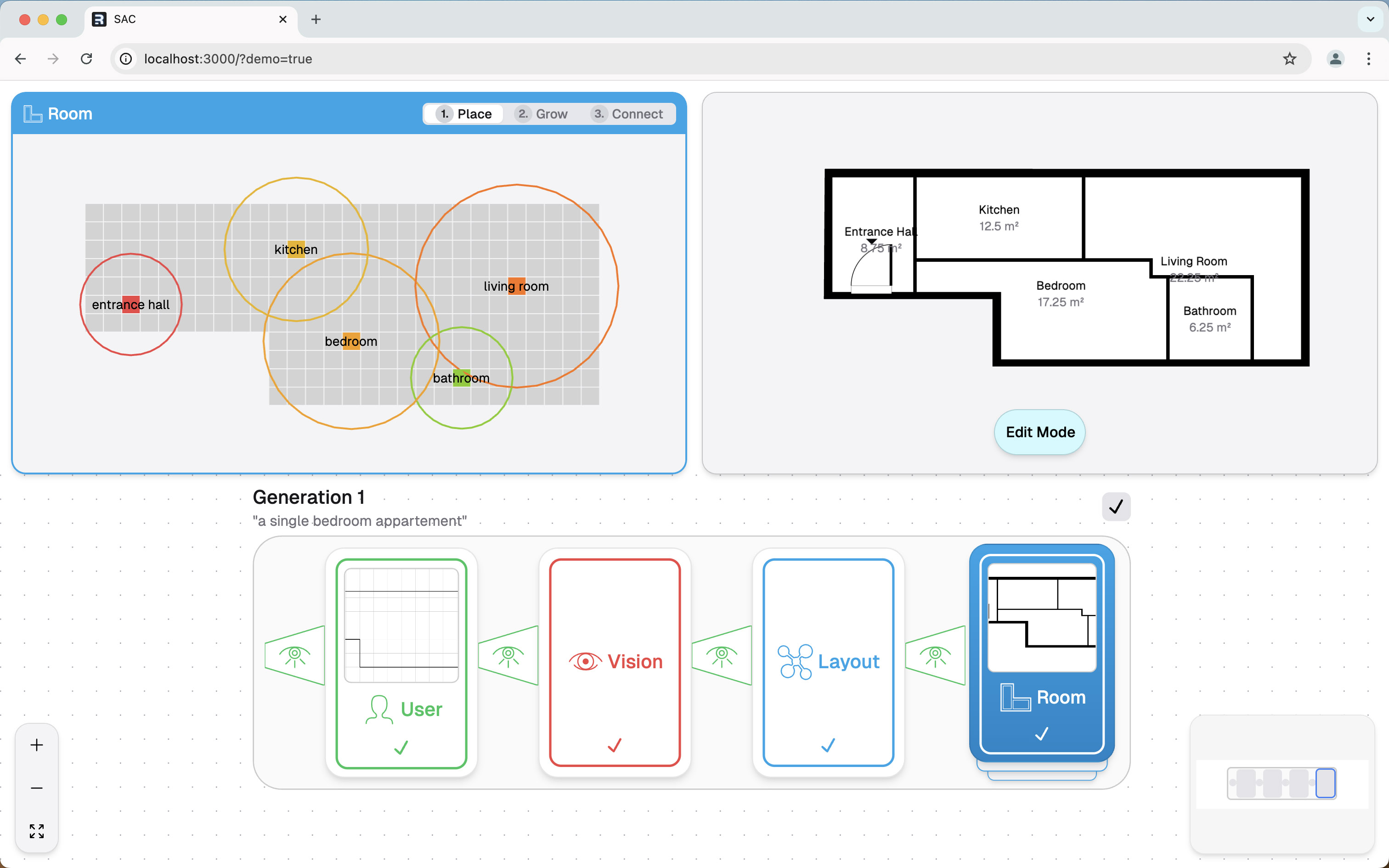
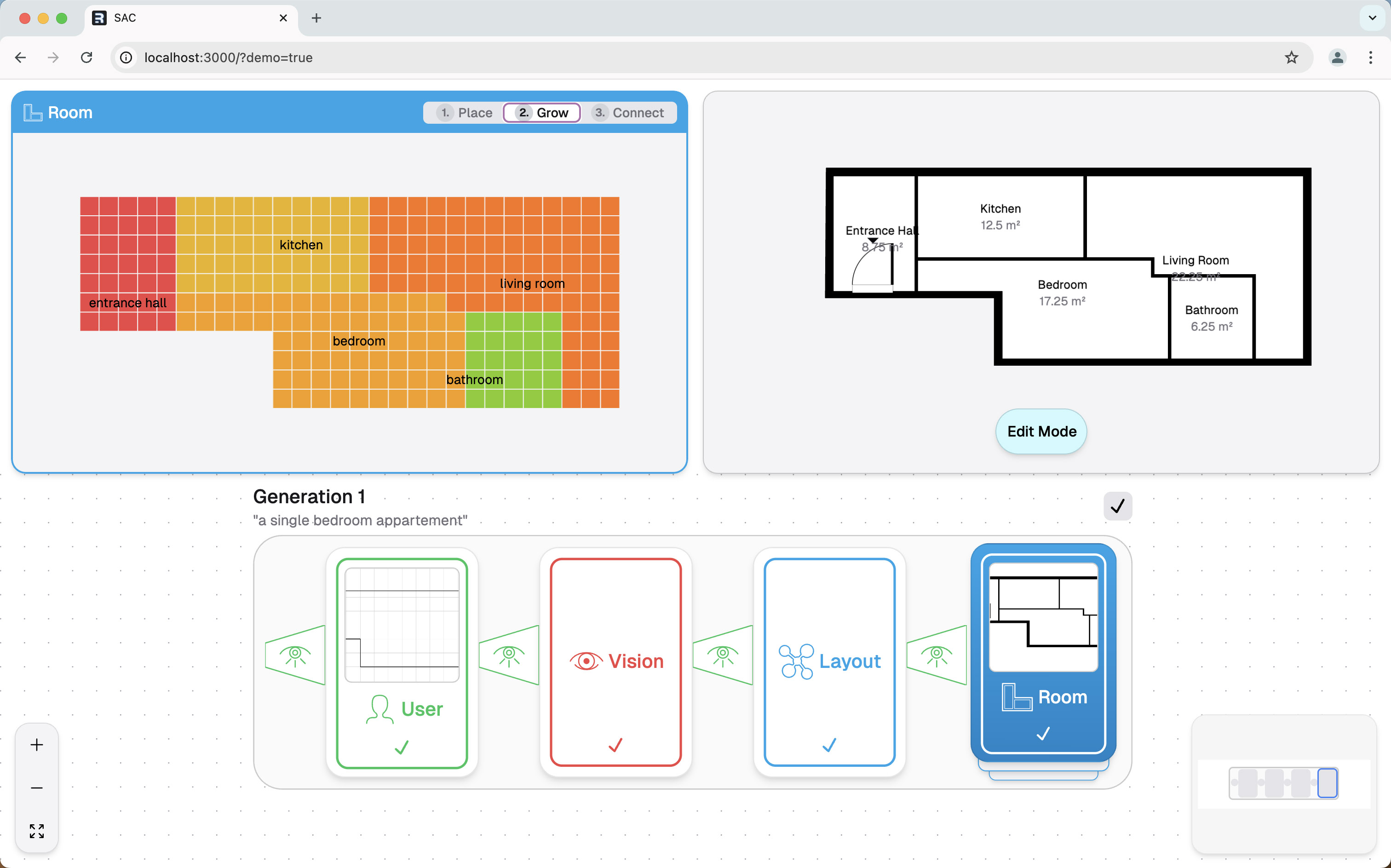
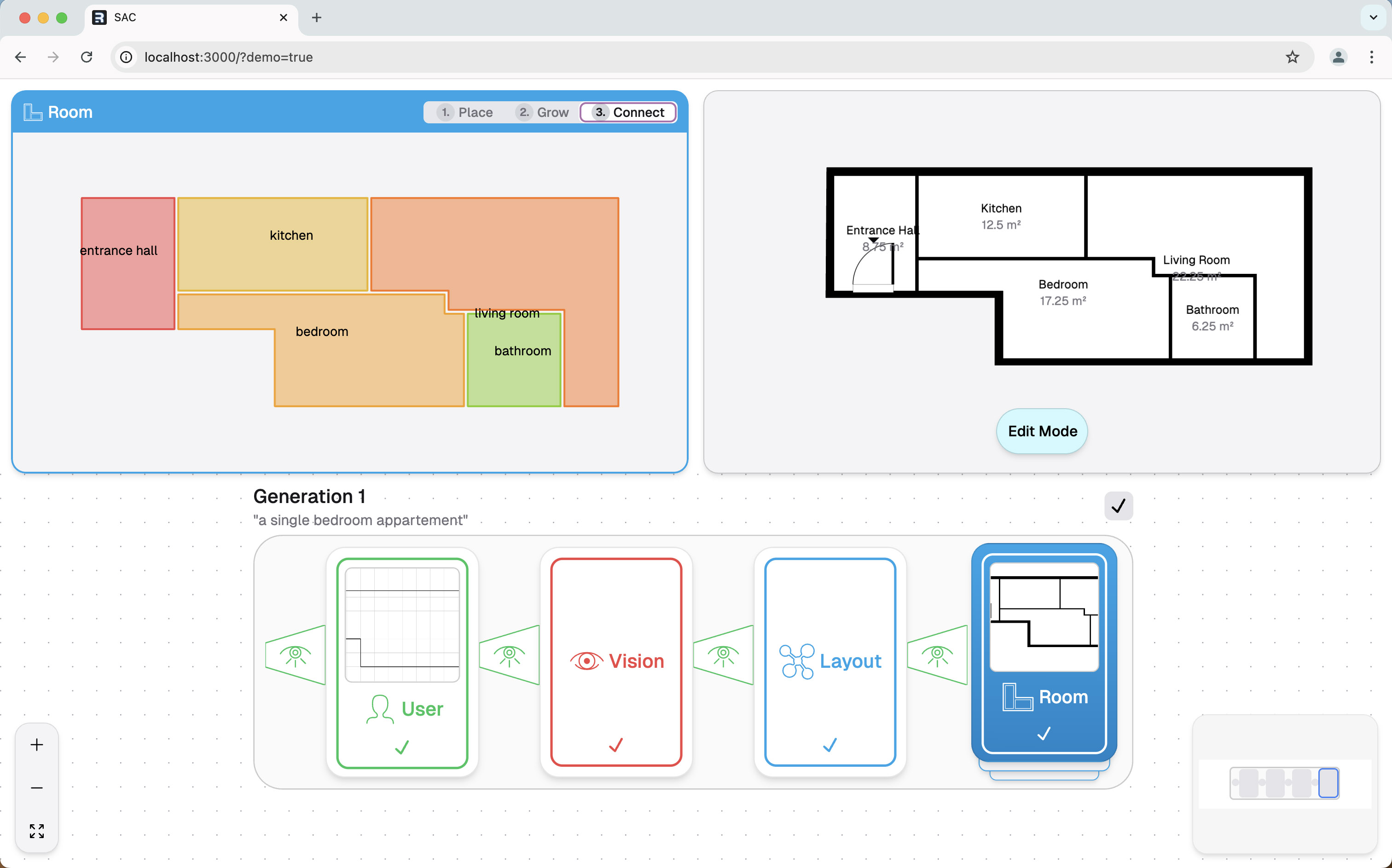
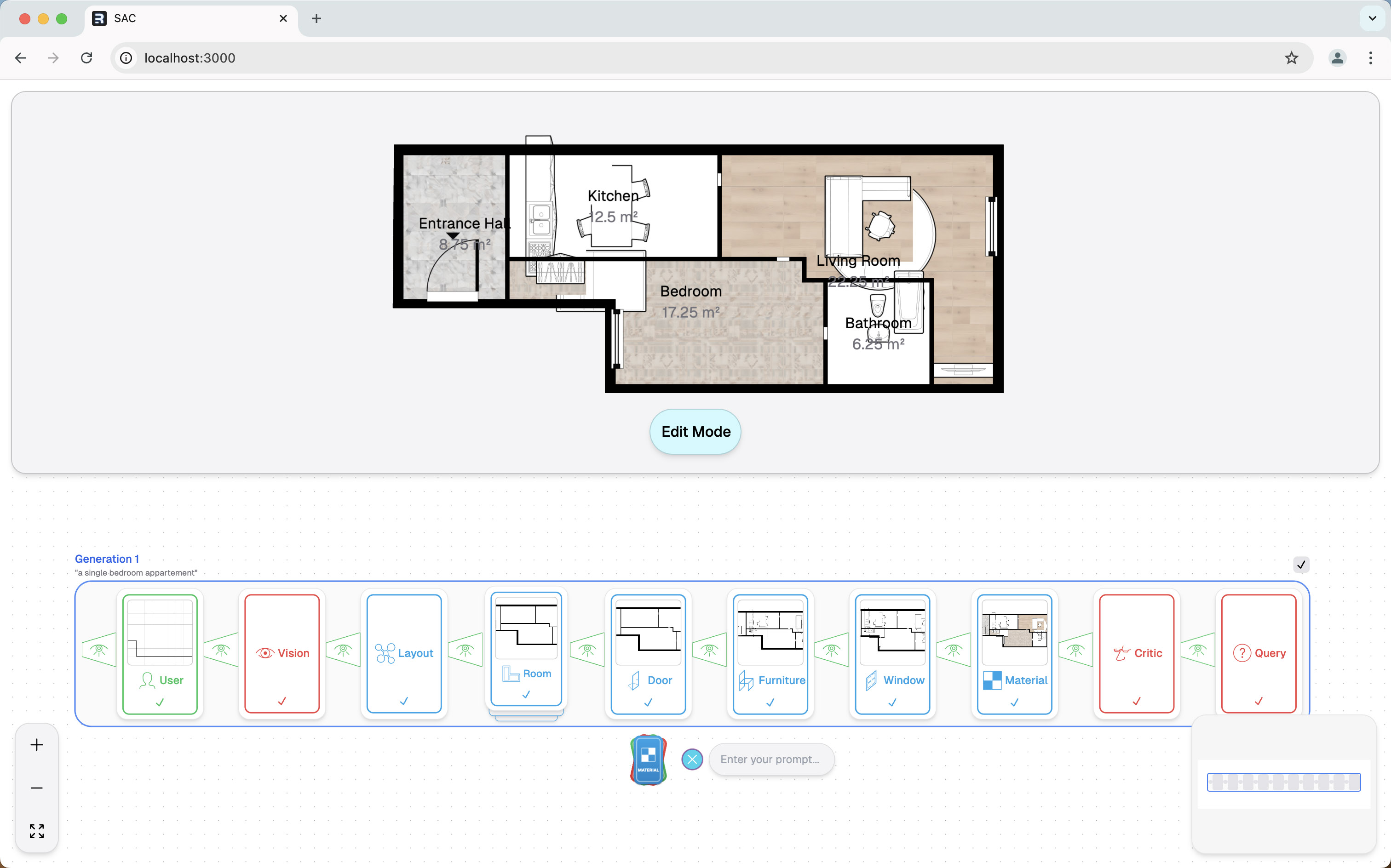
This ensures a robust quality of output, reveals transparent AI reasoning, and gives the user flexibility aimed to steer the AI without strictly defining the AI's content generation. The design and creation of this software broadens the potentials of generative AI use in architecture, presenting an application that balances two critical, yet opposed aspects of the architectural design process: precision and creativity.
For more details about results, conclusions, and rationality, download the documentation .
- 2025
- Primitive Slicer
- 2024
- Semantic Floor Plans
- ITECH Research Pavilion
- Wax Flamingos
- Phenomena Modeling
- 2023
- Honeycomb
- Water-QWOP
- Horse & Chariot
- Hyper-hydration
- 2022
- Sprawl & Resilience
- 2021
- Cybernetic Field
- Bubble-GAN
- 2020
- ELC: Carrick
- 15-112: placeHolder
- Collaborative Winding
- 2019
- Flood Museum
- Design Fabrication
- Spring Garden Hostel
- Modular Garden
- Bathhouse
- 2018
- Hoophouse
- Drawings